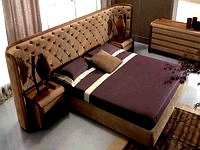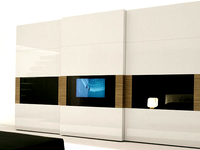"Why don’t we make a modern version of the old English club chair?" This was the question that Charles Eames asked when he first began developing the Lounge Chair.
Charles Eames' declared aim for this chair was to combine the utmost comfort with high-end materials and high-quality finishing. The result: a modern interpretation of the traditional club armchair boasting a convincingly well thought-out construction, right down to its tiniest details. Just as he intended, the chair conveys the impression of a soft, well-used baseball glove, inviting the user to sink back into it.
With the Lounge Chair - and accompanying Ottoman - Charles and Ray Eames set a new standard for comfort. The chair is one of the most important furniture designs of the 20th century and combines tradition and modernity in a way that is just as exciting today as it was when it was first made in 1956. The Lounge Chair, like all important classic designs, is a piece of furniture that comes from the past but fits into our modern time.
However, there is one caveat.
During the past fifty years, average human height has increased by nearly 10 cm. Knowing this, it becomes understandable that tall people today may feel that the Lounge Chair is a bit too small. Vitra has now decided – in accord with the Eames family – to offer the Lounge Chair with its original measurements from 1956 and also in a larger version.
One legitimate reason that justifies the creation of the new Lounge Chair - which Vitra has developed in agreement with the Eames family, and is now presenting after having subjected the chair to a whole host of tests - is the Eameses very own understanding of design. For the family, identifying social needs was an important part of the work of a designer. They compared a designer’s role to that of a good host - whose responsibility it was to anticipate and most obligingly fulfil their guests’ desires. For this reason alone, it was a given for the Eameses to follow the production process very closely and to make changes if necessity called for it.
Another fact also helped make it possible to modify the dimensions of the Lounge Chair. Charles and Ray Eames did not conceive their chair as "sculptural furniture", but rather as a system of complementary components that together should serve a specific purpose in the best possible way. Therefore, it is possible for individual components to be adjusted to fulfil new purposes, without putting the overall design or the interplay of the components into question.
The new version of the Lounge Chair features a longer seat, adjusted armrests and a higher backrest. Apart from the lengthened components, the chair’s dimensions, construction and high-quality materials have not been altered in any way. The Ottoman did not need any adjustments and retains its original form. At first glance, the large Lounge Chair hardly seems any different from the standard chair version (which is still available for purchase). The difference cannot so much be seen as it can be felt when sitting in the different models. And this means that both versions can stand - and be used - side by side without a problem.
Since 1956, the Eames Lounge Chair has combined ultimate comfort with both materials and workmanship of the highest quality. In the tradition of the English club chair, which inspired this classic design by Charles and Ray Eames, the original appearance of the Lounge Chair was defined by a dark wood veneer and black leather. However, the Eameses also created an early version with light-coloured leather upholstery. Developed in cooperation with the Eames Office, Vitra now introduces a new interpretation of the Lounge Chair. With white leather, polished aluminium and walnut veneer in a light finish, the new version harmonises perfectly with light-coloured interiors.
840x840x850mm,
420x630x560mm
890x840x850mm,
420x630x560mm
Designer: Charles Eames Charles & Ray Eames Ray Eames
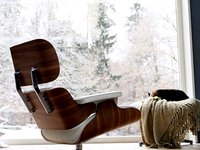
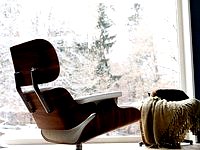
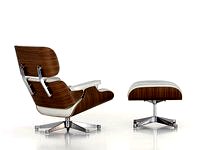
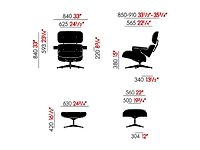

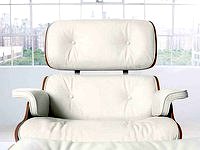
 Швейцария
Швейцария

